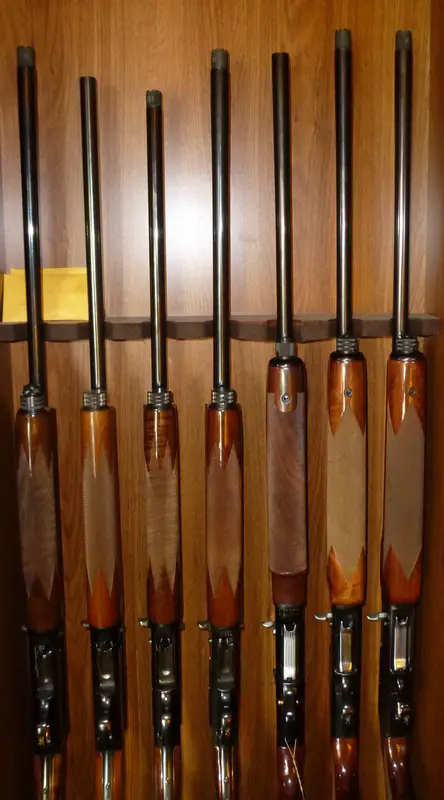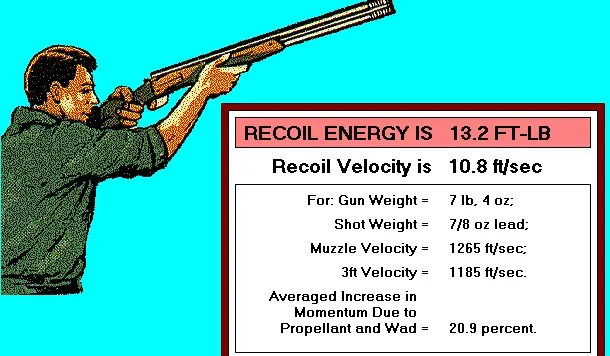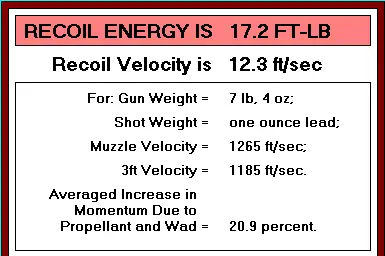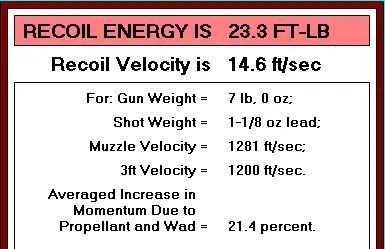


Why Not Shoot a Shotgun with Half the Recoil?

Half the recoil is pathetically easy to find, but if you check five hundred and ten out of the last three hundred ads you've seen, you might not think that it is. Rather than wasting your time with esoterica that doesn't work, it is very easy to enjoy a shotgun that you can shoot all day and not even feel like you've ever pulled the trigger at all. It isn't a new thing at all; it has been around as long as I can remember. It has nothing to do with any sloppy remembrance of recoil, or felt recoil . . . felt recoil being just an opinion it something is comfortable or not, with no equation that can properly describe it. If your food tastes good, then so it does, but no chart is going to guide others towards tasty meals. Sooner or later, if you want to know how it tastes, you'll need to take a bite.
So, what is this little-known secret to shotgunning nirvana, the hidden path to shooting enthusiastically with no discomfort? It is nothing more than the middleweight twenty gauge autoloader with common, everyday target loads. Somewhere, some time ago someone decided that shotguns needed to be light. It was further decided not only that 12 gauges needed to be light, but any 20 gauge just had to be lighter, far lighter, or somehow it wouldn't be right. But, two wrongs don't make a right, three rights make a left.
There is something magical about pulling the trigger, sensing a click but feeling next to nothing, and having a clay pigeon explode. If you don't like recoil the magical can become mandatory. A “50% less recoil” brag might seem condemned to be a marketing ploy, but it is can be essentially true. Let's look at Ed Lowry data from his 1996 shotshell program.
First, a 7-1/4 lb. 20 gauge with a common target load:

Next, the same 20 gauge with a 1 oz. load.

Finally, a 7 lb. 12 gauge with the classic 1-1/8 oz. 1200 fps 3 foot velocity target load.

Without any Without the benefit of any mood elevators or psychotropic concoctions, the 12 gauge produces greater than a 76% recoil increase over the 20 gauge 7/8 oz. load, and greater than a 35% increase in recoil over the 1 oz. 20 gauge load. You can run forcing cones from here to Mars and back, add in a hundred barrel ports as you wish, but you aren't going to begin to eliminate the 76% increase in actual recoil from the 12 gauge.
Three shotguns in particular have markedly low recoil levels. The original Browning Gold 20 gauge (not the latest 6-1/4 lb. version), the steel receiver Browning B-80, and the Browning A-5 Mag 20. They are all heavy guns by some standards for 20 gauges, but not heavy at all for breaking clays or an afternoon on the dove field. In addition to the basics of gun weight, you have gas actions in the Gold and B-80, and a massive forearm spring in the A-5 Mag 20 that soaks up the rearward barrel movement common to the long recoil action autoloading design. When your girlfriend smiles and comments, “Wow, was that ever fun. I thought shotguns were supposed to kick?” that's all the reward you'll ever need. The same holds true for your young son or daughter.
Ironically, none of these three 20 gauge guns are the most common today. There are reasons for that. Browning lightened up the 20 ga, Gold to 6-1/4 lbs., by use of a titanium alloy tube and a few other tweaks, and it remains a soft shooter. But not nearly as soft as the original, by any means. The Browning B-80, made by Beretta, came in both steel and alloy 20 gauge versions and the alloy version (about 6-1/4 lbs.) sold better. The A-5 Mag 20 was originally marketed as the 20 gauge that shot everything. Problem was, it didn't. None of my Mag 20s (all three) cycle less than 1 oz. loads with the friction array set for light loads. At the high brass or heavy load setting, they won't kick out 1-1/8 oz. loads, it takes a 1-1/4 oz. three inch shell to do that, in all of them. They are the softest shooting 20s I have with three inch shells, though, and it sure isn't because of a miracle recoil pad-- none of them have anything but hard factory butt plates.
The seven to seven and a quarter pound autoloading twenty gauge is a sorely overlooked product segment. A twenty gauge automatically has slimmer lines and forearms than its twelve gauge counterparts and low physical recoil has the benefit of a quicker second shot. Less recoil to recover from, no springy stock things that still allow for excessive stock movement. That is a fundamental issue with soft recoil pads, crushable stock goodies and pogo-stick genre buttstock options: they must allow for unwanted stock movement in order to work. When actual physical rearward force is reduced, the stock movement, muzzle flip, and just about everything else vanishes in concert with the recoil that just isn't there.
While the moderate weight autoloading twenty isn't the horse for every course, much less every shooter, it has long been an overlooked shotgun platform and that's a shame.
Copyright 2012 by Randy Wakeman. All Rights Reserved.

Custom Search

Custom Search



